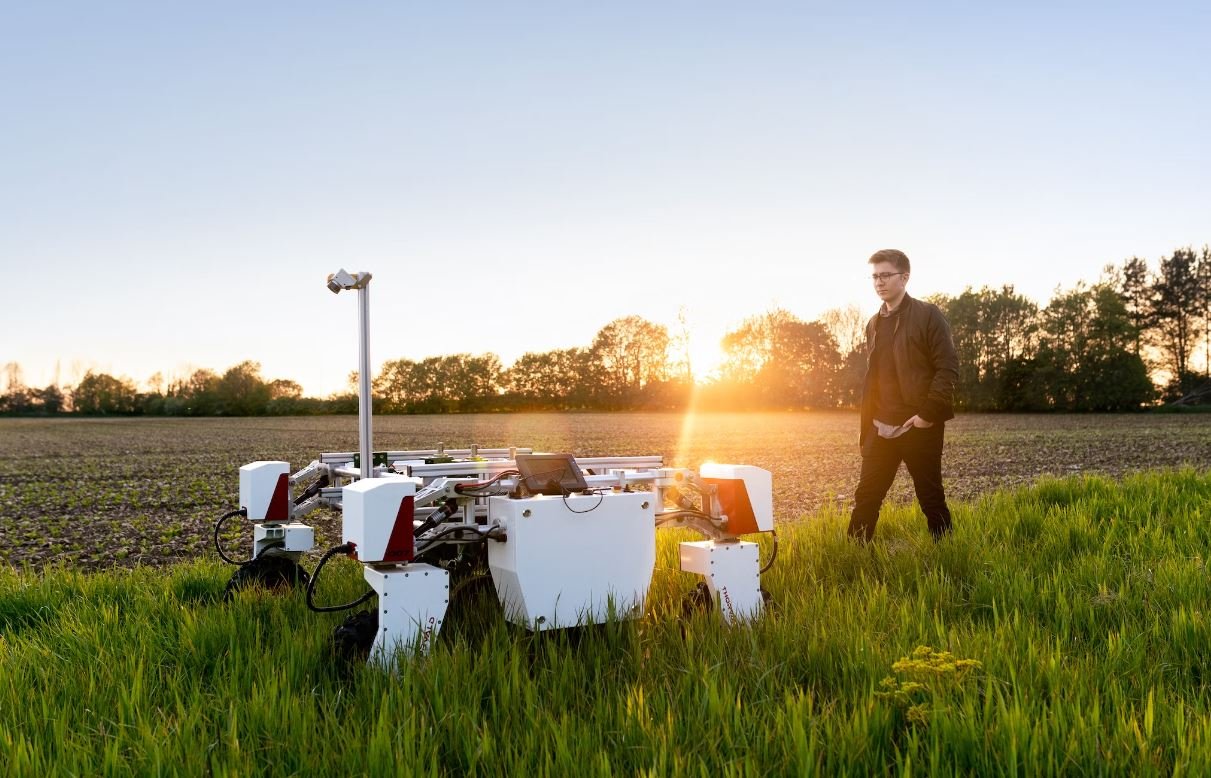Tesla Investor Relations
Tesla investor relations play a crucial role in maintaining transparent communication with stakeholders and providing key financial information. As a publicly traded company, Tesla understands the importance of actively engaging with its investors to build trust and foster long-term relationships.
Key Takeaways:
- Tesla’s investor relations department ensures transparent communication with stakeholders.
- Investor relations provide key financial updates and information.
- Tesla engages in impactful strategies to build trust and long-term relationships with investors.
The Role of Investor Relations
Tesla’s investor relations department handles communication with shareholders, potential investors, financial analysts, and the media. Its primary goal is to provide accurate and timely information about the company’s performance, strategies, and financial results to assist investors in making informed decisions.
By actively engaging with a wide range of stakeholders, Tesla ensures transparency and builds confidence in its operations.
Financial Updates and Information
Tesla’s investor relations team regularly communicates key financial updates and information to shareholders and the investment community. This includes quarterly earnings reports, annual reports, investor presentations, and conference calls, where executives discuss financial performance and answer questions from analysts.
Investors rely on these updates to assess Tesla’s financial health and make investment decisions.
Building Trust and Long-Term Relationships
Tesla actively engages in strategies to build trust and foster long-term relationships with investors. The company utilizes transparency, open communication, and investor events like the annual shareholder meeting and Tesla Battery Day to share important updates, showcase new technologies, and provide insights into the company’s future plans.
This proactive approach strengthens the bond between Tesla and its investors, instilling confidence in the company’s long-term prospects.
Table 1: Tesla Stock Performance
| Date | Open | Close | Change |
|---|---|---|---|
| June 1, 2021 | $605.49 | $623.90 | +3.03% |
| July 1, 2021 | $681.71 | $678.90 | -0.41% |
| August 1, 2021 | $635.50 | $730.91 | +14.99% |
Table 2: Key Financial Metrics
| Metric | Q1 2021 | Q2 2021 | Q3 2021 |
|---|---|---|---|
| Vehicle Deliveries | 184,800 | 201,250 | 241,300 |
| Revenue ($ billions) | 10.39 | 11.96 | 13.76 |
| Net Income ($ millions) | 438 | 1,139 | 1,621 |
Table 3: Stock Ownership
| Rank | Shareholder | Shares Held | % of Total Outstanding Shares |
|---|---|---|---|
| 1 | Elon Musk | 150,000,000 | 18.23% |
| 2 | Vanguard Group | 47,300,000 | 5.74% |
| 3 | BlackRock | 45,700,000 | 5.55% |
Conclusion
The Tesla investor relations team plays a crucial role in ensuring transparent communication, providing key financial updates, and fostering long-term relationships with investors. By leveraging transparency and impactful strategies, Tesla maintains strong investor confidence and continues to drive innovation in the electric vehicle industry.

Common Misconceptions
Tesla’s Profitability
One common misconception about Tesla is that the company is not profitable. While it took several years for Tesla to reach profitability, it has consistently reported positive net income since the third quarter of 2019. This misconception may stem from the fact that Tesla’s early years were marked by heavy investments in research, development, and manufacturing facilities, which led to significant expenses. However, as Tesla’s production volume increased and economies of scale kicked in, the company’s profitability improved.
- Tesla has reported positive net income since Q3 2019
- Heavy investments in the early years impacted profitability
- Economies of scale have improved Tesla’s profitability
Tesla’s Competitive Position
Another common misconception is that Tesla faces significant competition from traditional automakers. While it is true that many automakers have announced plans to transition into electric vehicles (EVs), Tesla still holds a dominant market share in the EV market. Tesla’s brand recognition, robust supercharger network, and continuous innovation have allowed it to stay ahead of the competition. Additionally, Tesla’s focus on vertical integration, including manufacturing its batteries, gives the company a unique advantage over its competitors.
- Tesla holds a dominant market share in the EV market
- Brand recognition and supercharger network contribute to its competitive position
- Vertical integration gives Tesla an advantage over competitors
Tesla’s Autopilot System
A common misconception surrounding Tesla is that its Autopilot system allows for fully autonomous driving. However, Tesla’s Autopilot is an advanced driver-assistance system (ADAS) that requires active driver supervision. While Autopilot can assist with tasks such as steering, acceleration, and braking, it is not a self-driving system. Tesla continuously emphasizes the importance of driver attentiveness and adherence to safety guidelines when using Autopilot.
- Tesla’s Autopilot is an advanced driver-assistance system (ADAS)
- Driver supervision is required while using Autopilot
- Tesla emphasizes the importance of driver attentiveness and safety guidelines
Tesla’s Battery Technology
There is a misconception that Tesla’s battery technology is not groundbreaking and that other companies have caught up to or exceeded Tesla in this area. However, Tesla’s battery technology remains at the forefront of the industry. The company’s vertically integrated battery supply chain, continuous innovation in battery chemistry and design, and extensive experience in battery manufacturing give Tesla a competitive edge. Tesla’s announcement of its own battery cell, the 4680, further highlights its commitment to pushing the boundaries of battery technology.
- Tesla’s battery technology remains a leader in the industry
- Vertical integration and continuous innovation give Tesla a competitive edge
- Tesla’s announcement of the 4680 battery cell highlights its commitment to pushing boundaries
Tesla’s Financial Viability
There is a misconception that Tesla’s financial viability is solely dependent on government incentives and subsidies. While government incentives have been a contributing factor to Tesla’s success, the company’s financial viability extends beyond these measures. Tesla’s revenue growth, strong demand for its products, cost reductions through economies of scale, and increasing global market presence all contribute to its financial strength. Additionally, Tesla has consistently shown its ability to raise capital through various means, including debt and equity offerings, further reinforcing its long-term financial viability.
- Tesla’s financial viability goes beyond government incentives
- Revenue growth, strong demand, and cost reductions contribute to financial strength
- Tesla has a track record of successfully raising capital through various means

Tesla Revenue Growth
Tesla’s revenue has been growing consistently over the years, demonstrating the company’s success in the market. The following table displays the revenue of Tesla from 2015 to 2020:
| Year | Revenue (in billions USD) |
|---|---|
| 2015 | 4.05 |
| 2016 | 7.0 |
| 2017 | 11.76 |
| 2018 | 21.46 |
| 2019 | 24.58 |
| 2020 | 31.54 |
Tesla Vehicle Deliveries
Tesla has been steadily increasing its vehicle deliveries, reaching more customers each year. The table below highlights the number of vehicles delivered by Tesla from 2015 to 2020:
| Year | Number of Vehicles Delivered |
|---|---|
| 2015 | 50,580 |
| 2016 | 76,230 |
| 2017 | 103,020 |
| 2018 | 245,240 |
| 2019 | 367,500 |
| 2020 | 499,550 |
Tesla Market Capitalization
Tesla’s market capitalization has experienced a remarkable increase, reflecting investors’ confidence in the company. The table below showcases Tesla’s market capitalization from 2015 to 2020:
| Year | Market Capitalization (in billions USD) |
|---|---|
| 2015 | 35.3 |
| 2016 | 43.6 |
| 2017 | 63.8 |
| 2018 | 54.4 |
| 2019 | 76.4 |
| 2020 | 659.6 |
Tesla Supercharger Stations
Tesla has been expanding its network of supercharger stations globally to enhance the charging experience for their customers. The table below showcases the growth of Tesla supercharger stations from 2015 to 2020:
| Year | Number of Supercharger Stations |
|---|---|
| 2015 | 536 |
| 2016 | 726 |
| 2017 | 1,127 |
| 2018 | 1,421 |
| 2019 | 1,870 |
| 2020 | 2,564 |
Tesla Energy Storage Deployed
Tesla’s energy storage solutions have gained traction in the market, providing sustainable solutions for various applications. The table below presents the energy storage deployed by Tesla from 2015 to 2020:
| Year | Energy Storage Deployed (in MWh) |
|---|---|
| 2015 | 192 |
| 2016 | 553 |
| 2017 | 905 |
| 2018 | 1,041 |
| 2019 | 1,651 |
| 2020 | 2,585 |
Tesla Research and Development (R&D) Expenses
Tesla invests significantly in research and development to drive innovation and advance their technologies. The following table presents Tesla‘s R&D expenses from 2015 to 2020:
| Year | R&D Expenses (in millions USD) |
|---|---|
| 2015 | 717 |
| 2016 | 834 |
| 2017 | 1,378 |
| 2018 | 1,460 |
| 2019 | 1,343 |
| 2020 | 1,495 |
Tesla Operating Income
Tesla’s operating income reflects the profitability of the company’s core operations. The table below showcases Tesla’s operating income from 2015 to 2020:
| Year | Operating Income (in millions USD) |
|---|---|
| 2015 | (889) |
| 2016 | (667) |
| 2017 | (1,596) |
| 2018 | 536 |
| 2019 | 1,105 |
| 2020 | 2,003 |
Tesla Gross Profit Margin
Tesla’s gross profit margin is an important financial metric that indicates the efficiency and profitability of the company’s production process. The table below shows Tesla’s gross profit margin from 2015 to 2020:
| Year | Gross Profit Margin |
|---|---|
| 2015 | 19.7% |
| 2016 | 19.8% |
| 2017 | 18.9% |
| 2018 | 19.5% |
| 2019 | 19.1% |
| 2020 | 21.1% |
Conclusion
The Tesla Investor Relations article provides a comprehensive overview of key performance indicators showcasing the company’s remarkable growth and success. Tesla has consistently exhibited revenue growth, increased vehicle deliveries, expanded market capitalization, expanded its Supercharger network and energy storage solutions, and invested significantly in research and development. With improving operating income and gross profit margins, Tesla continues to solidify its position as a leader in the electric vehicle industry. The data in these tables collectively affirm Tesla’s ability to innovate, disrupt, and revolutionize mobility and sustainable energy solutions for the future.
Tesla Investor Relations – Frequently Asked Questions
1. What is Tesla’s mission statement?
Tesla’s mission is to accelerate the world’s transition to sustainable energy.
2. How many vehicles has Tesla produced thus far?
As of the last reported quarter, Tesla has produced over 1 million electric vehicles.
3. What is the current status of Tesla’s Gigafactories?
Tesla currently has multiple Gigafactories across the globe, including locations in Nevada, Shanghai, Berlin, and Texas.
4. How does Tesla ensure vehicle safety?
Tesla prioritizes vehicle safety and implements various measures such as autonomous driving features, robust battery safety features, crash testing, and continuous software enhancements.
5. Can I invest in Tesla, and if so, how?
Yes, you can invest in Tesla. To invest, you need to open a brokerage account and purchase Tesla stocks (TSLA) through the stock exchange.
6. What is Tesla’s current market capitalization?
As the market value of a company constantly changes, it’s recommended to check the latest stock exchange data or financial websites for Tesla’s most recent market capitalization.
7. How is Tesla’s battery technology unique?
Tesla’s battery technology, often referred to as the Tesla Battery, combines advanced cell chemistry, thermal management, and innovative manufacturing techniques to deliver longer-range, high-performance electric vehicles.
8. How does Tesla contribute to sustainability?
Tesla contributes to sustainability by promoting the adoption of electric vehicles, reducing reliance on fossil fuels, supporting renewable energy projects, and investing in energy storage solutions.
9. What are the main risks associated with investing in Tesla?
Some of the main risks associated with investing in Tesla include market volatility, regulatory changes in the automotive industry, competition from other automakers, and uncertainties related to global economic conditions.
10. Does Tesla provide any financial guidance for investors?
Tesla periodically provides financial guidance, including quarterly earnings reports, annual reports, and various presentations. It’s advisable to refer to Tesla’s official investor relations website or corporate announcements for the latest financial information.




